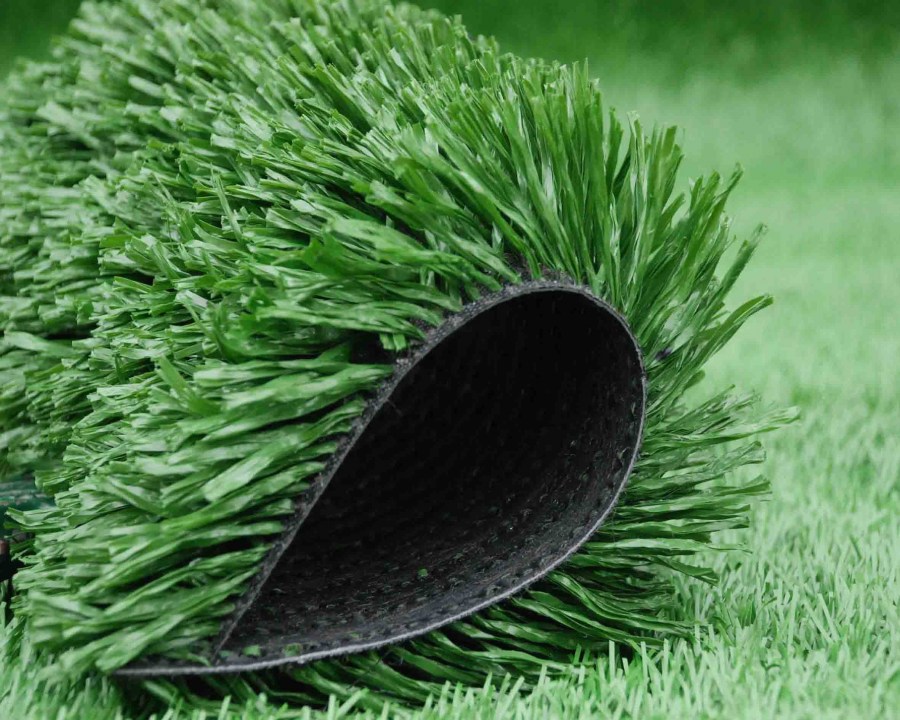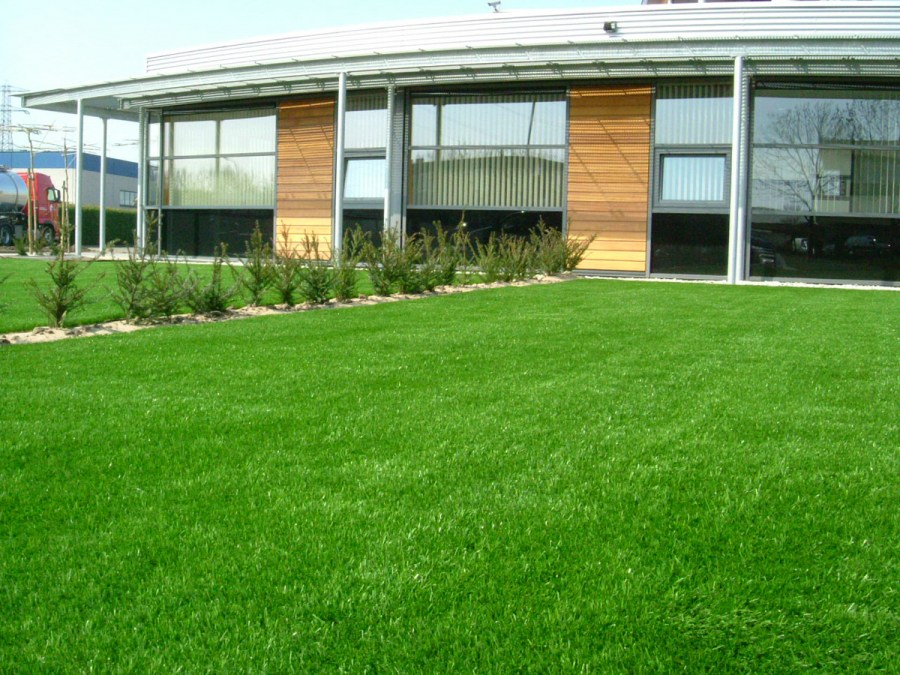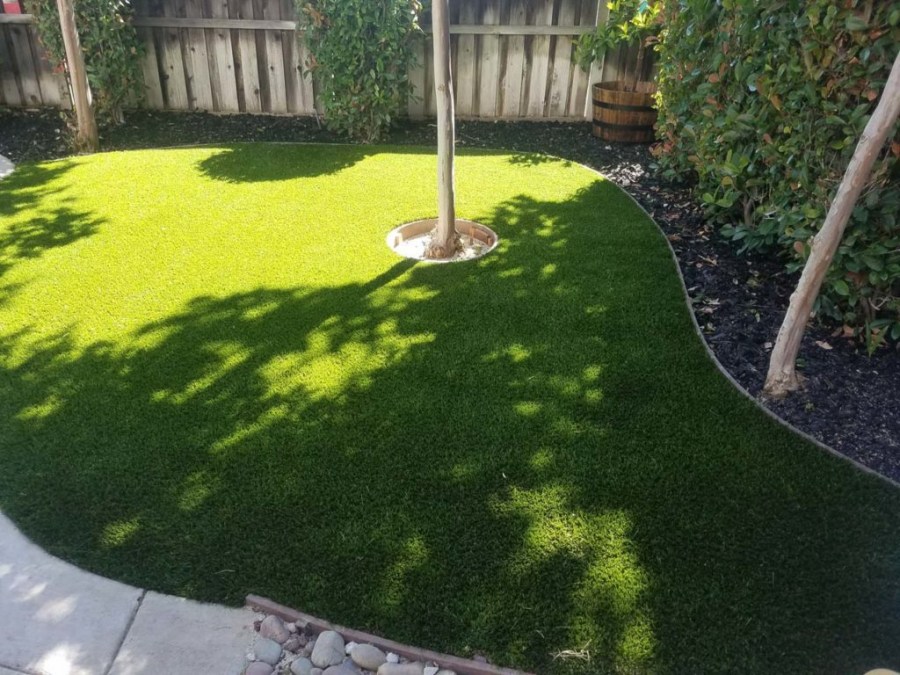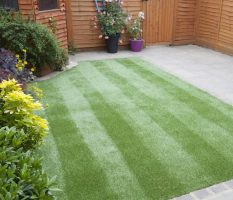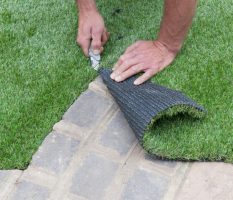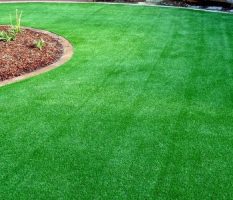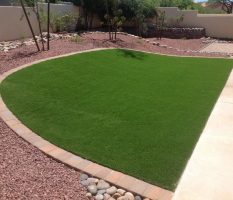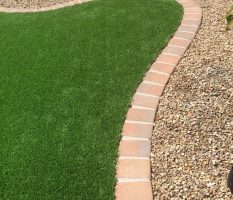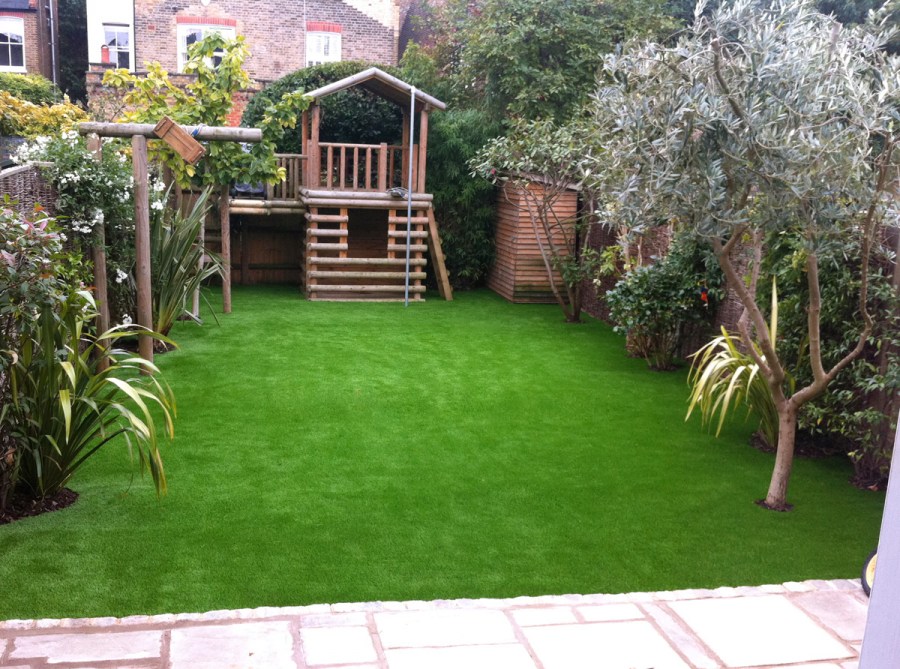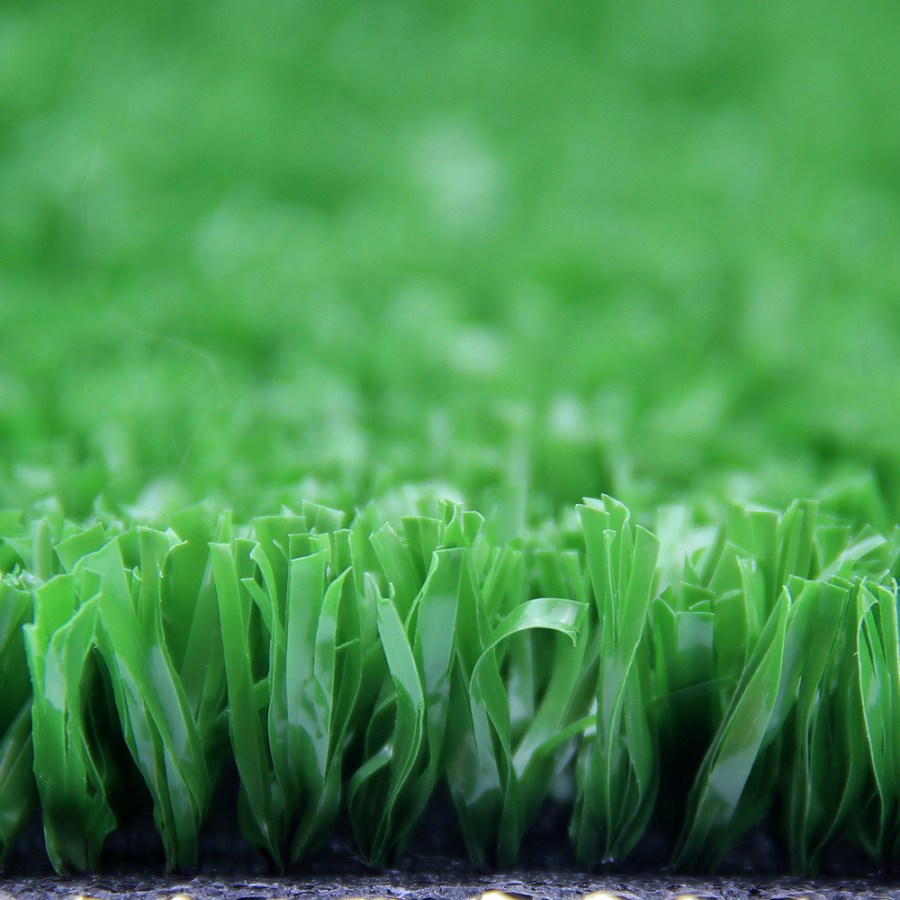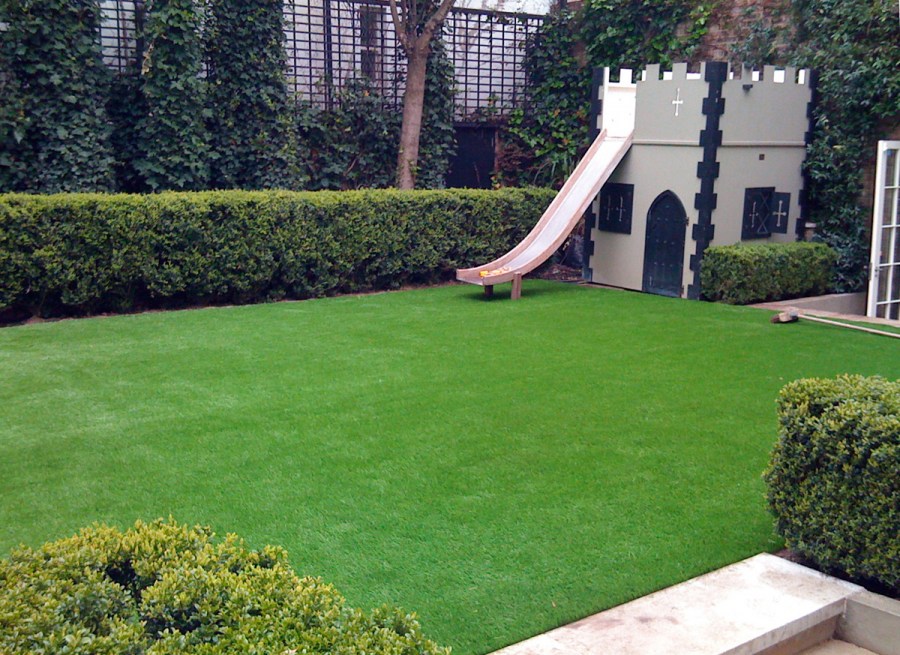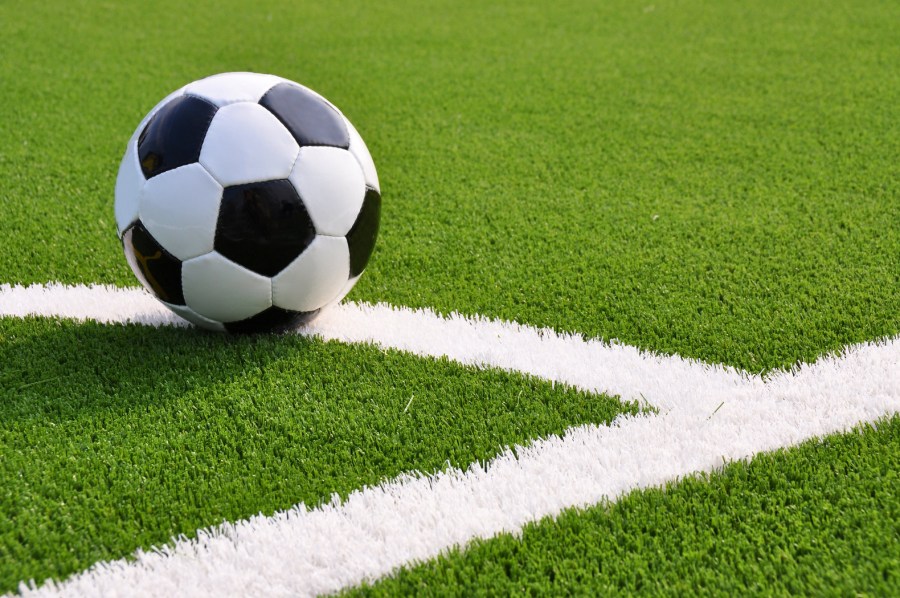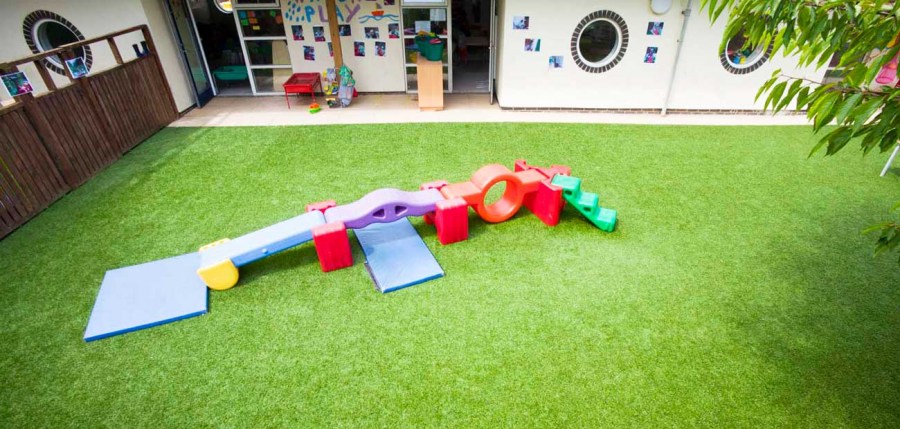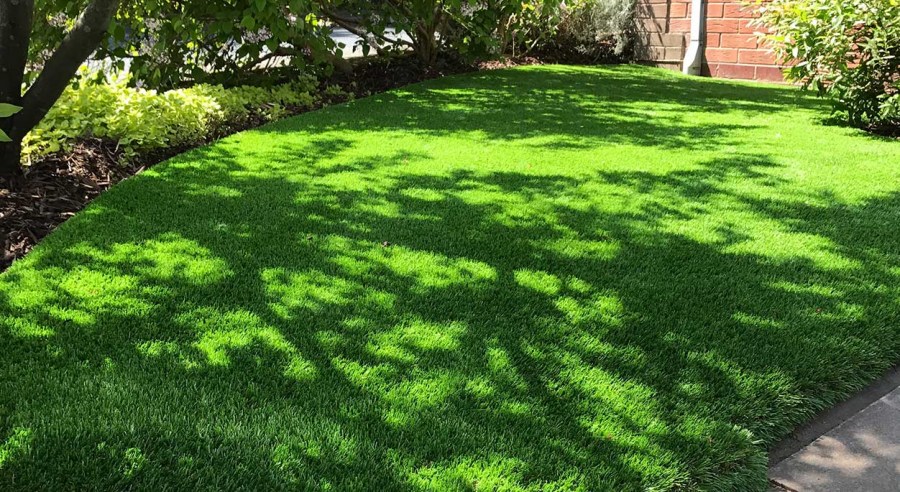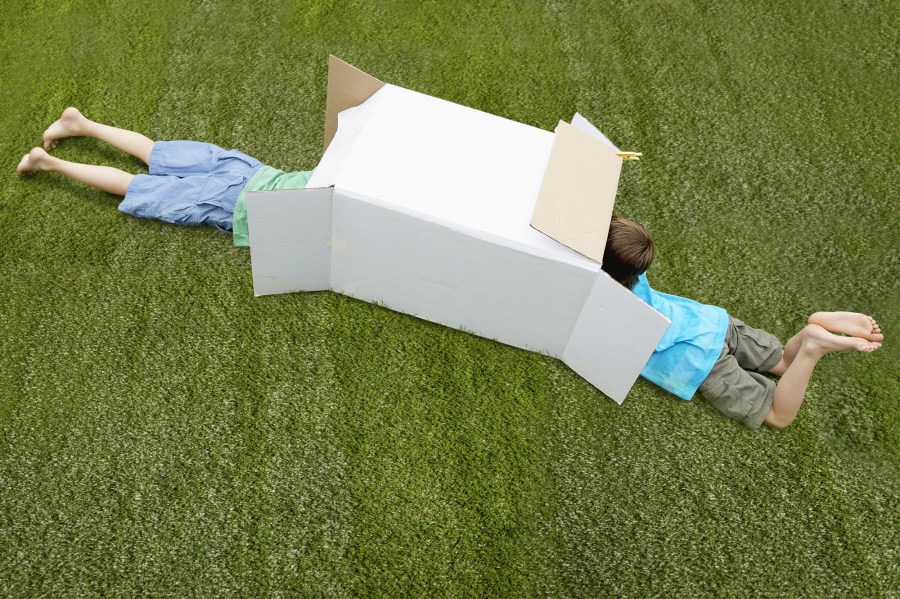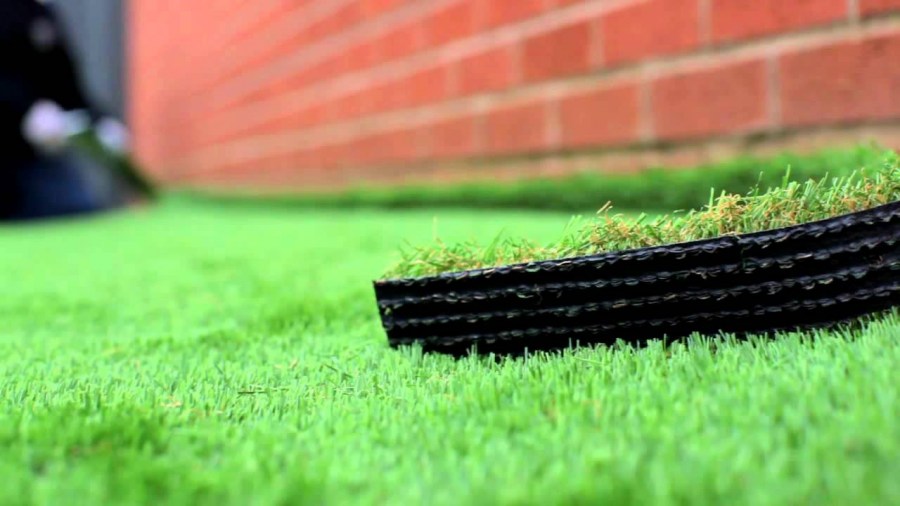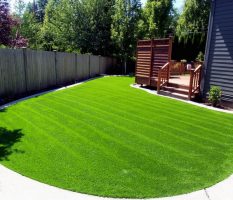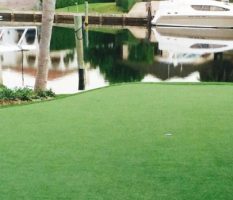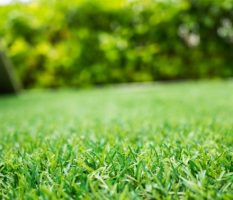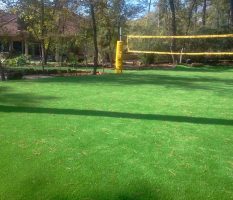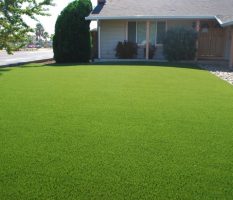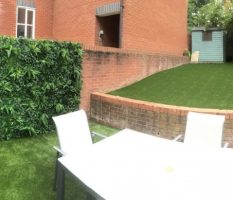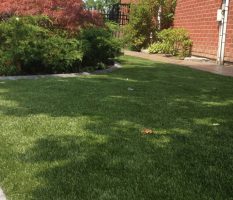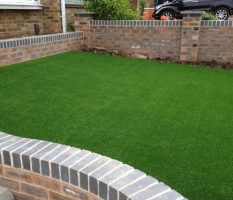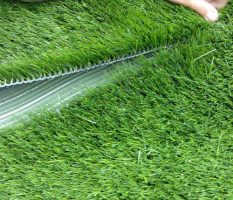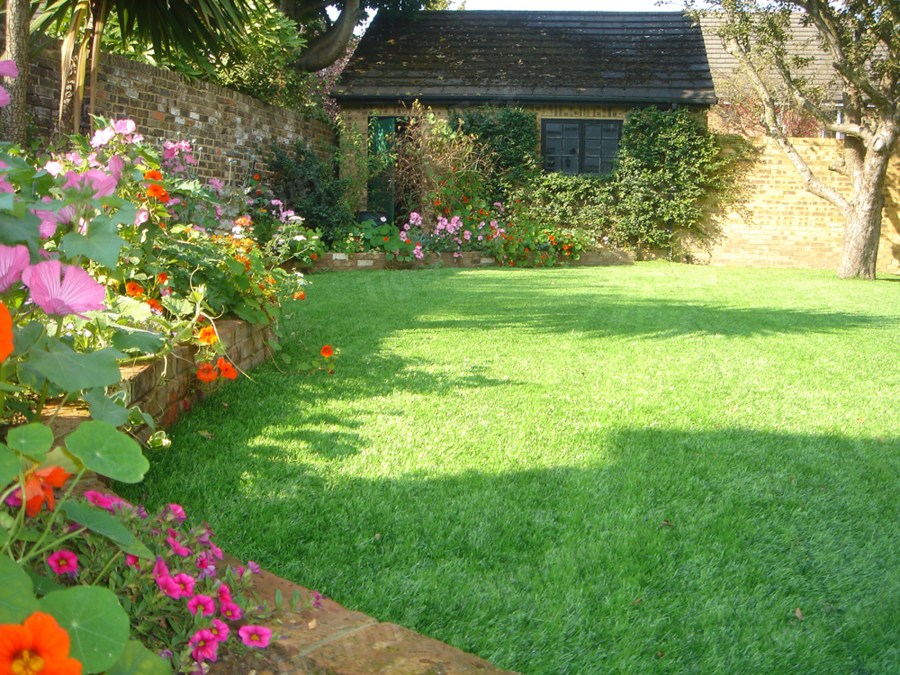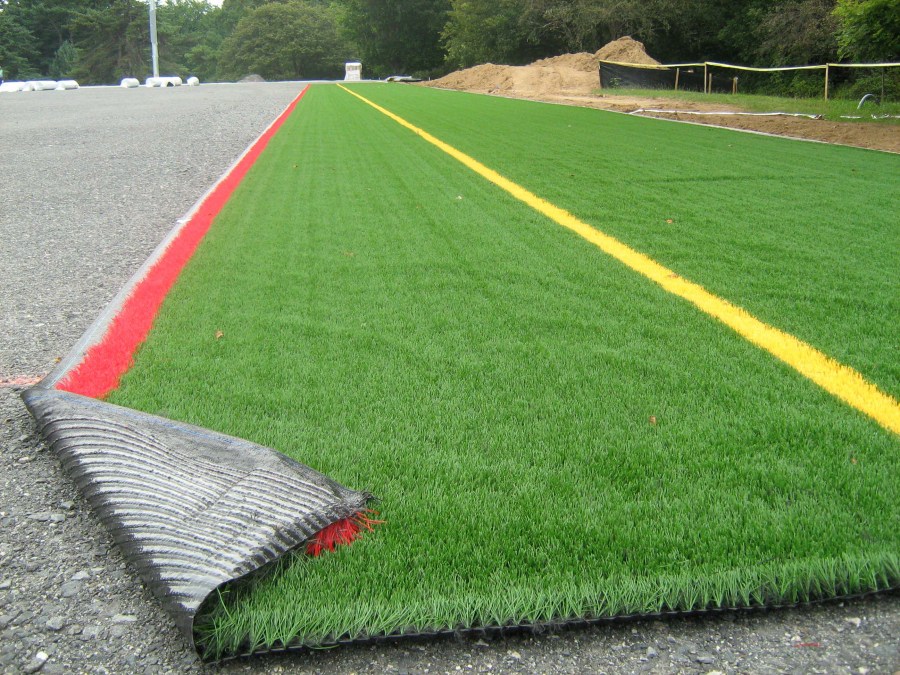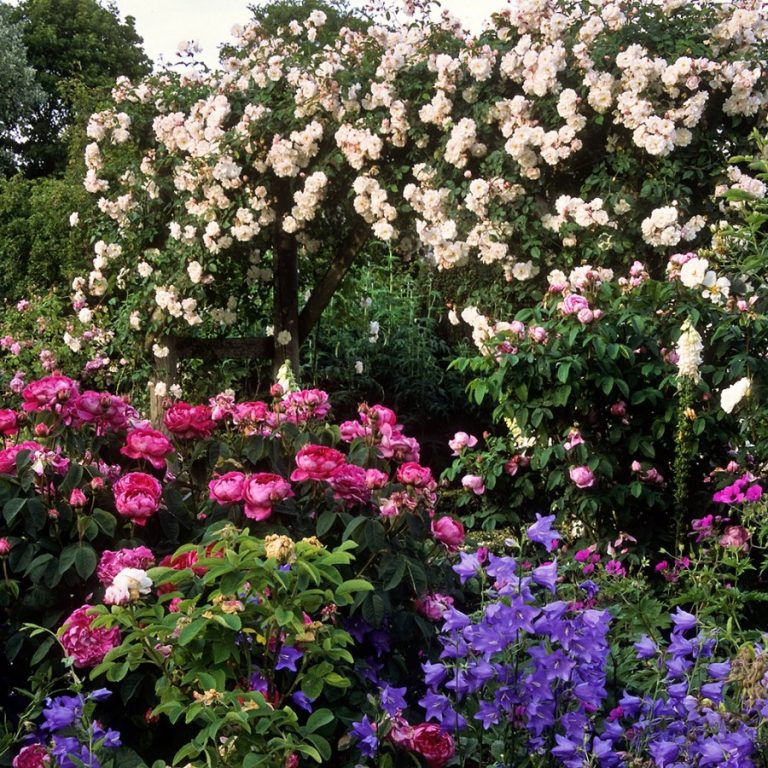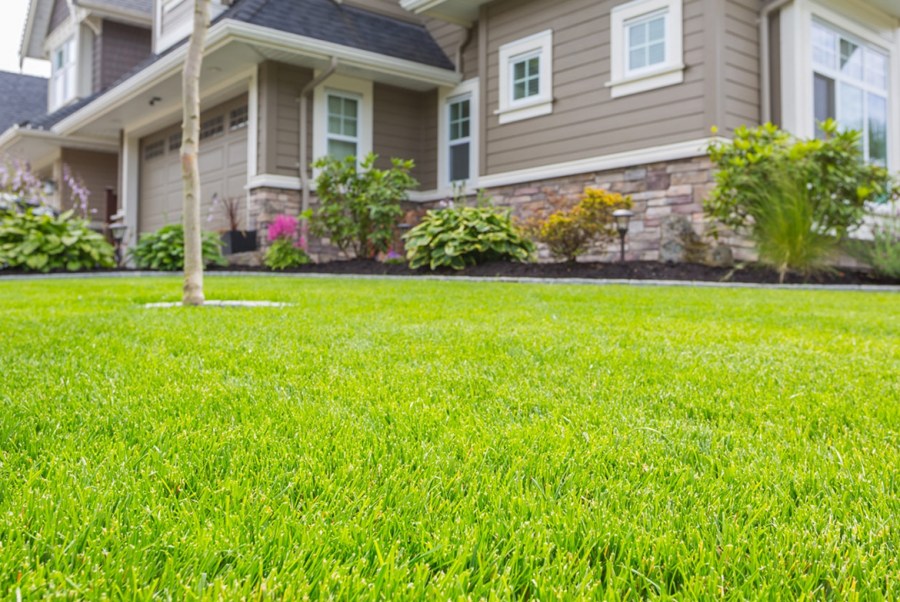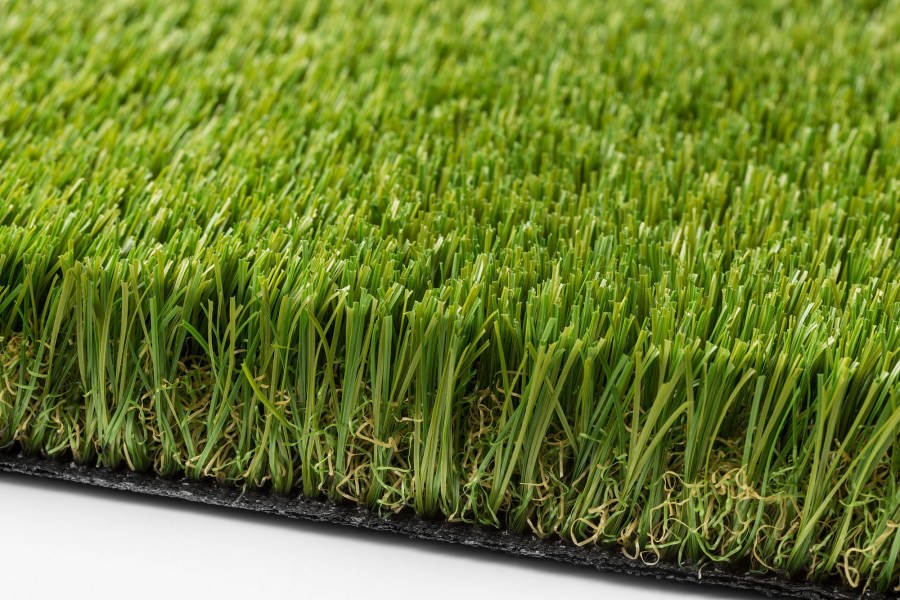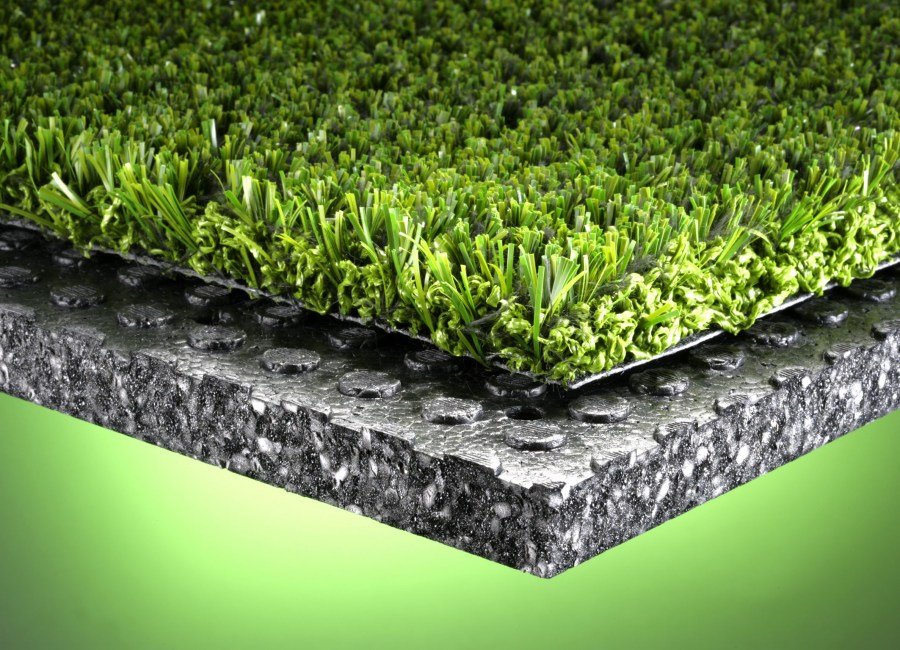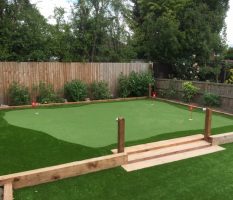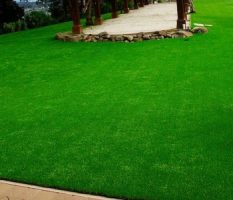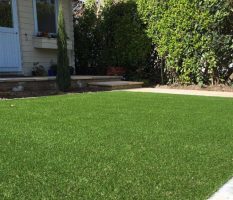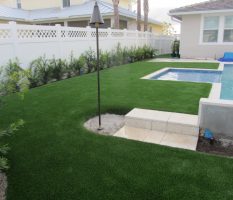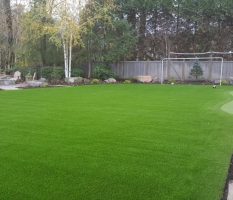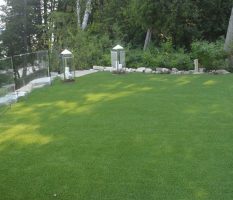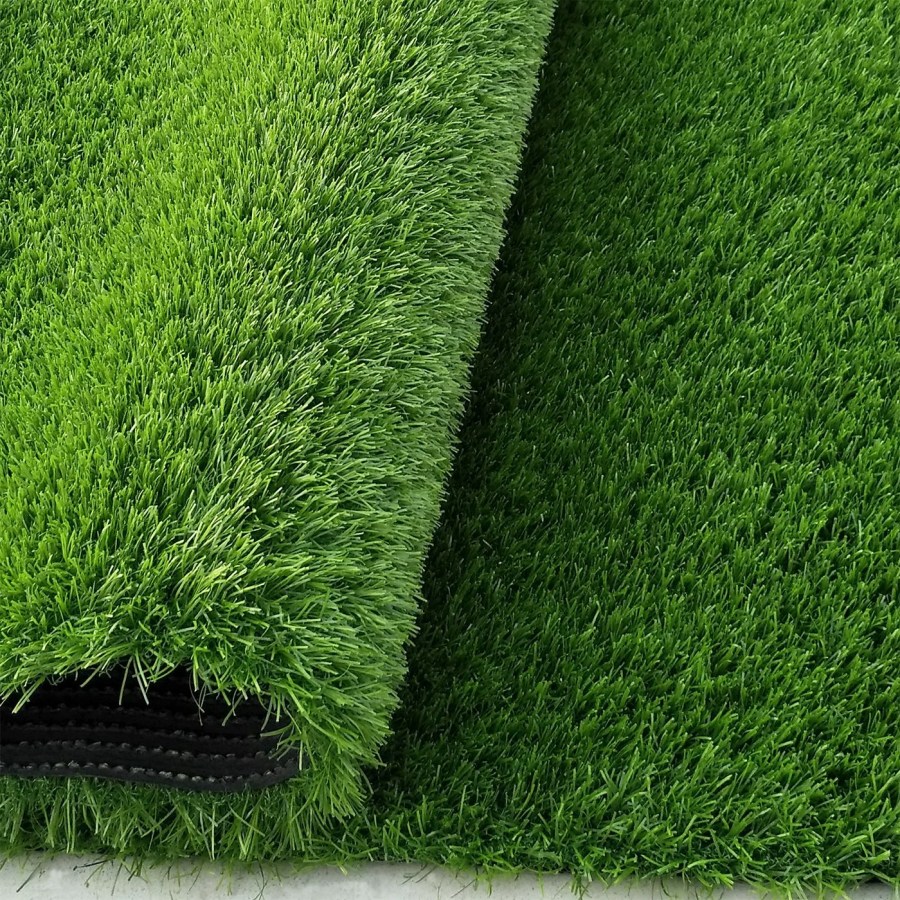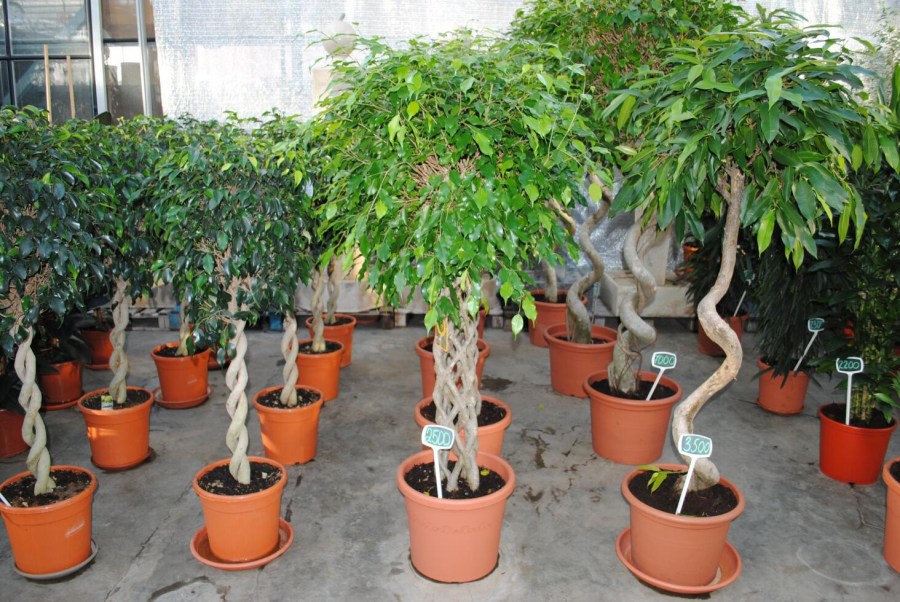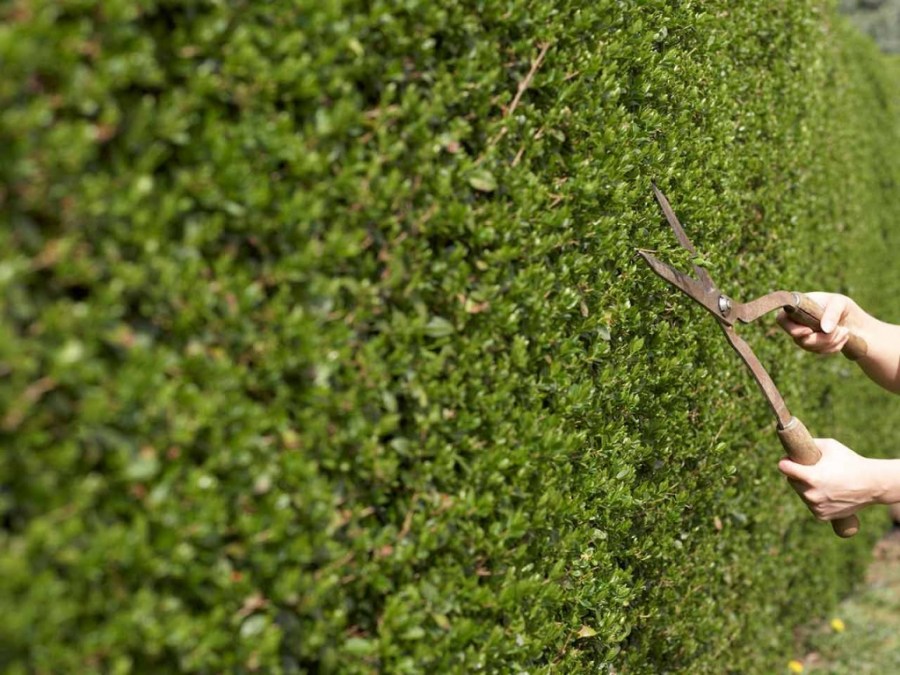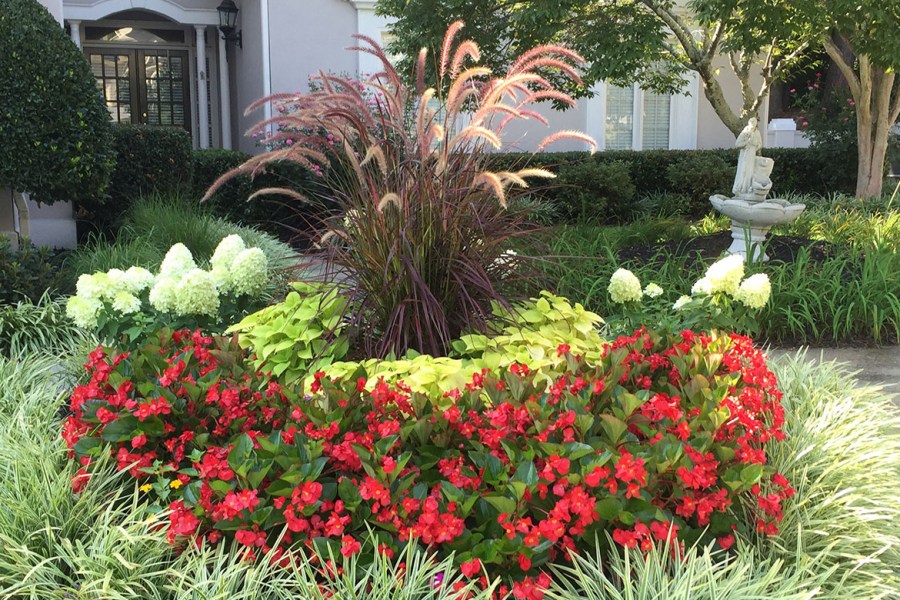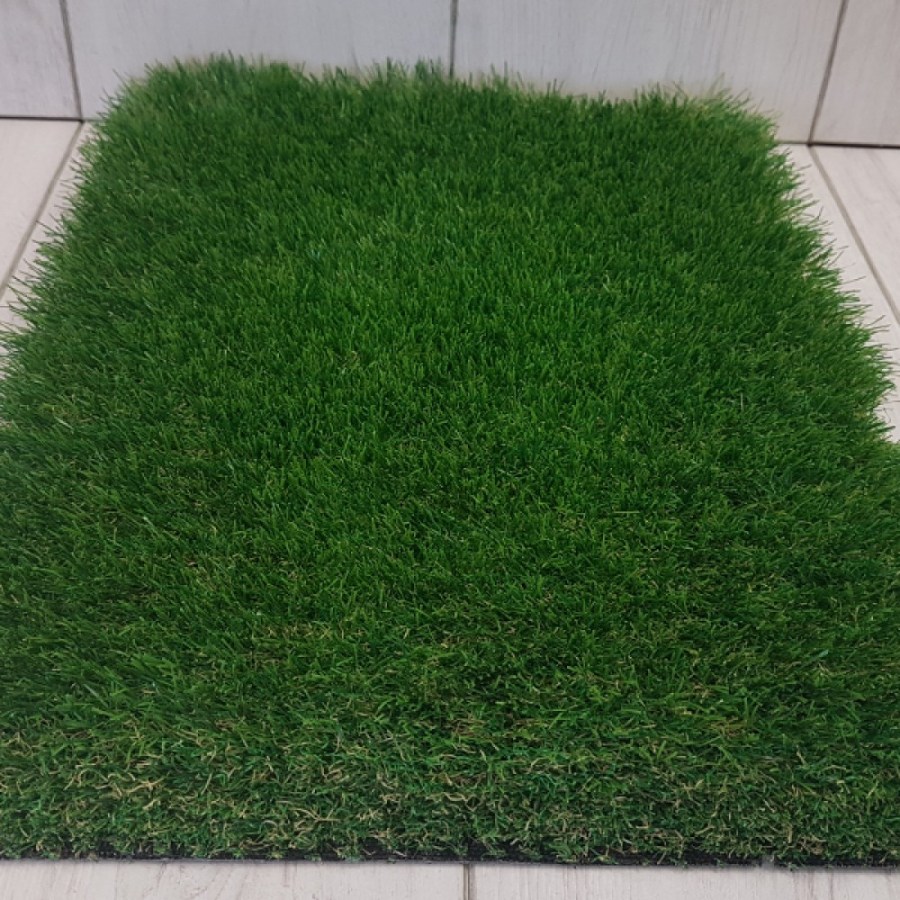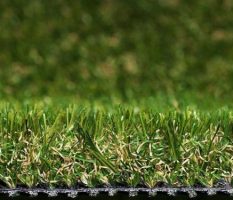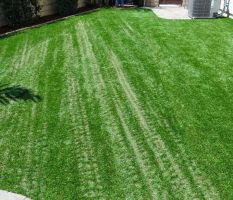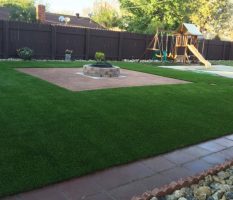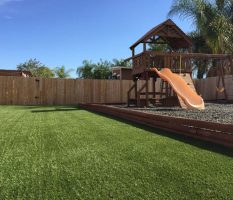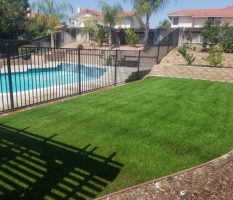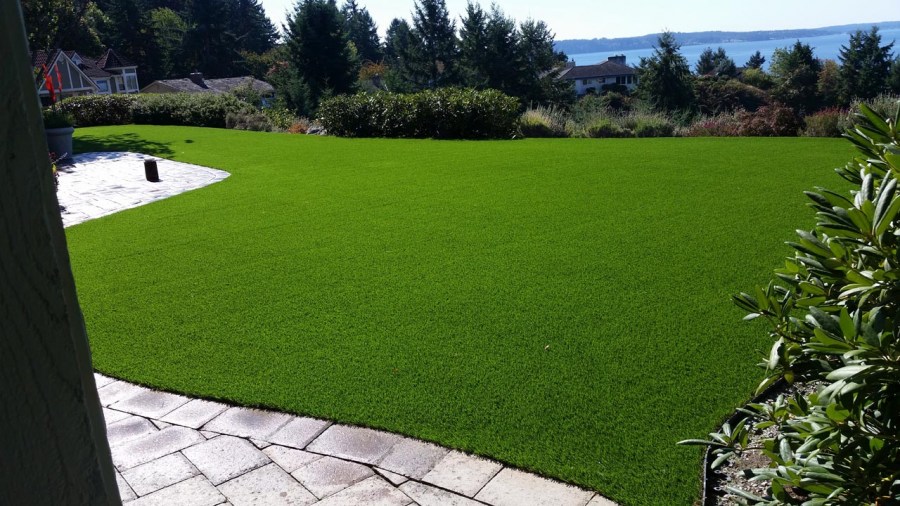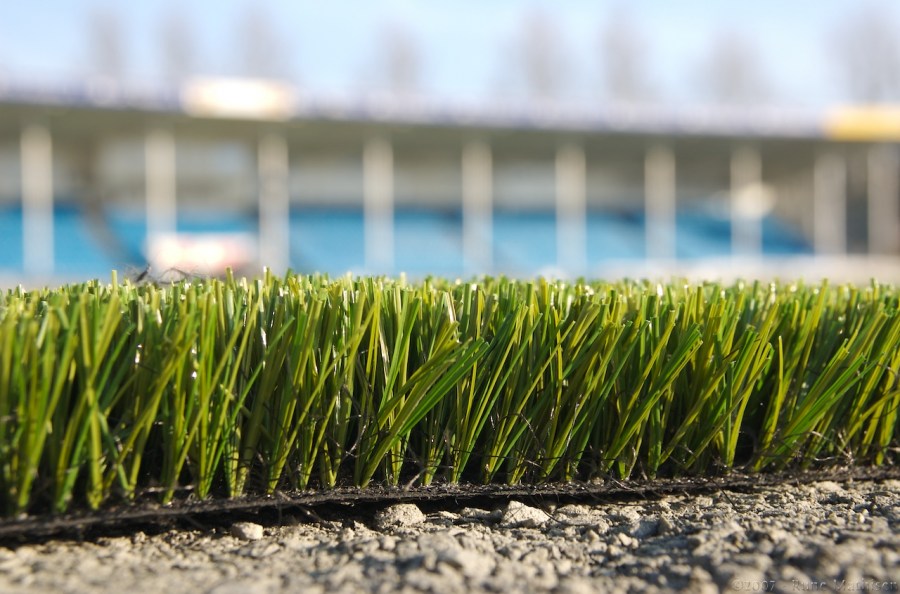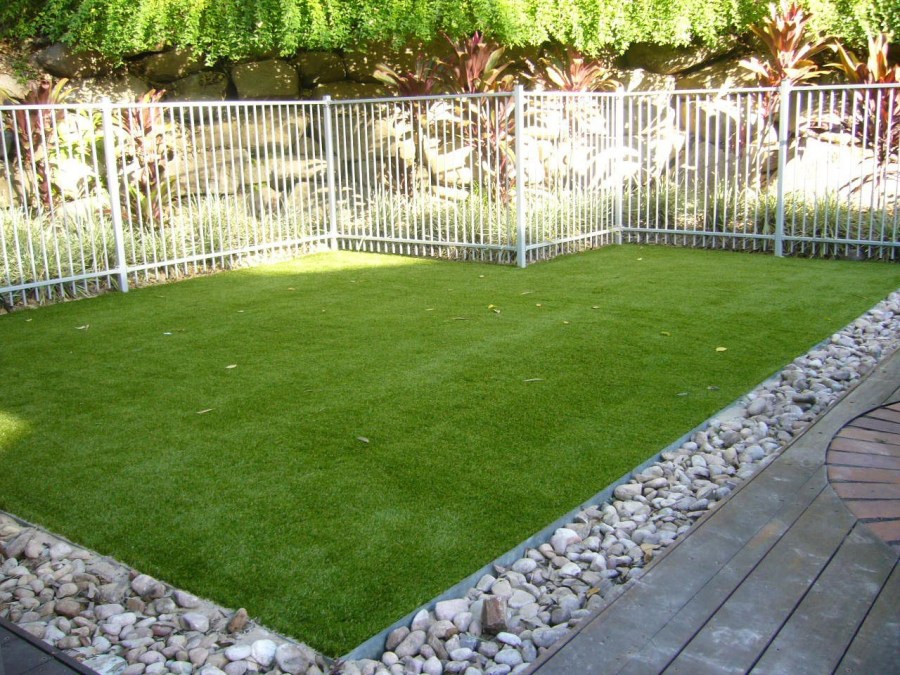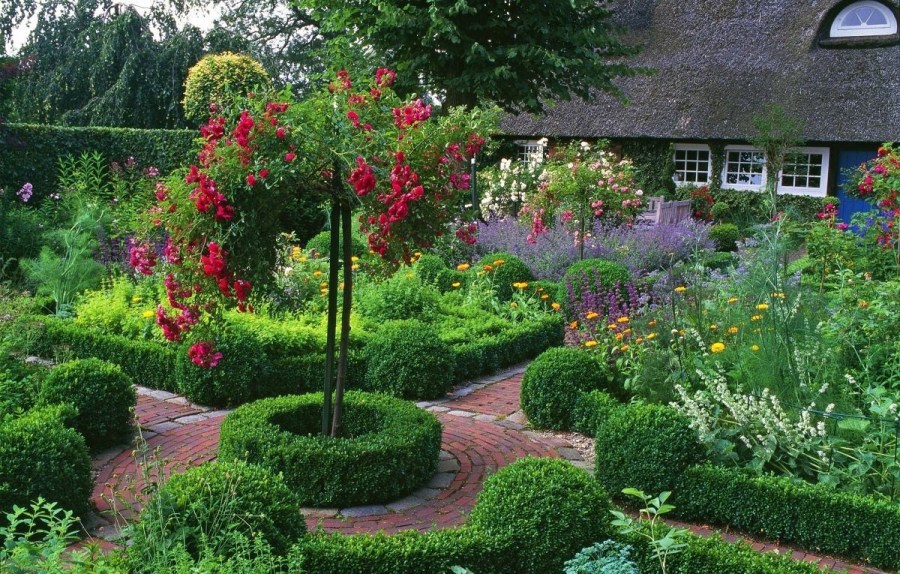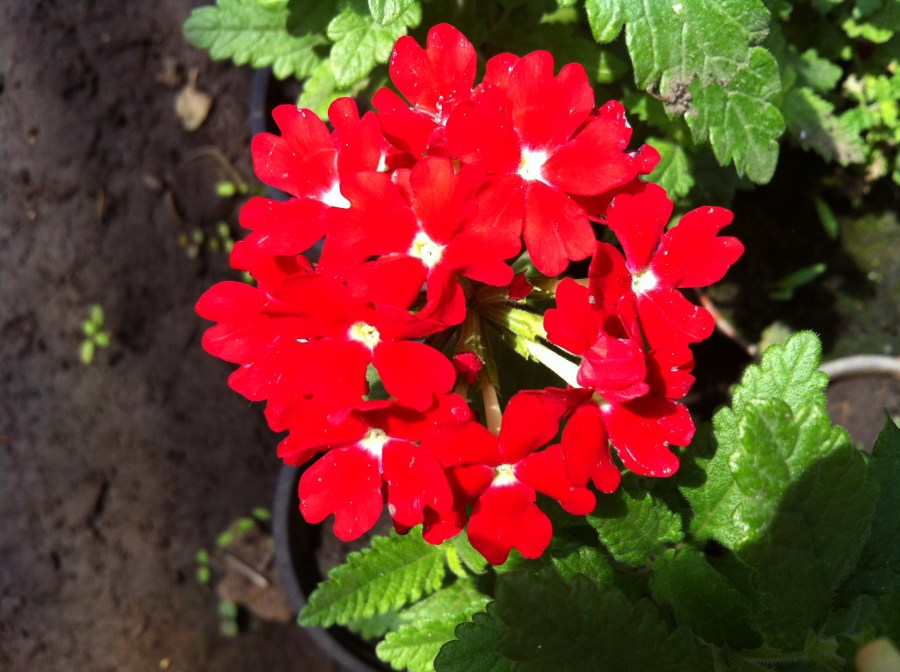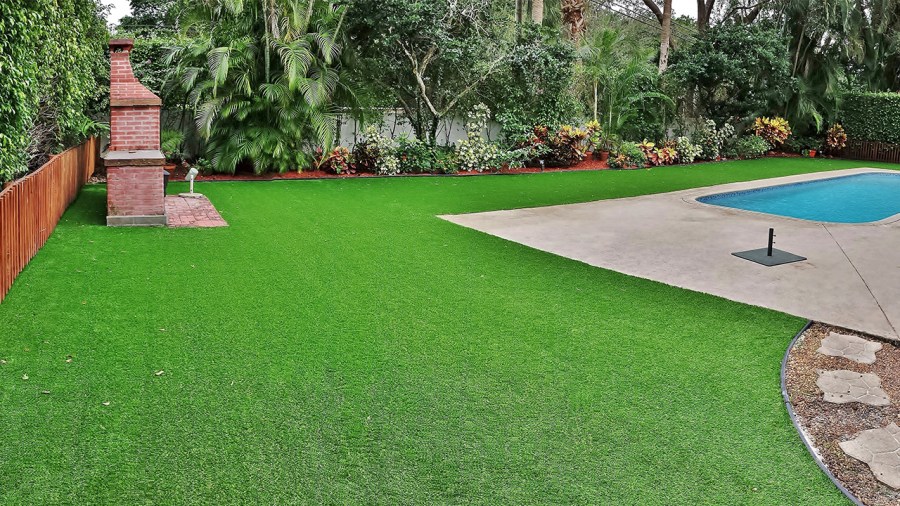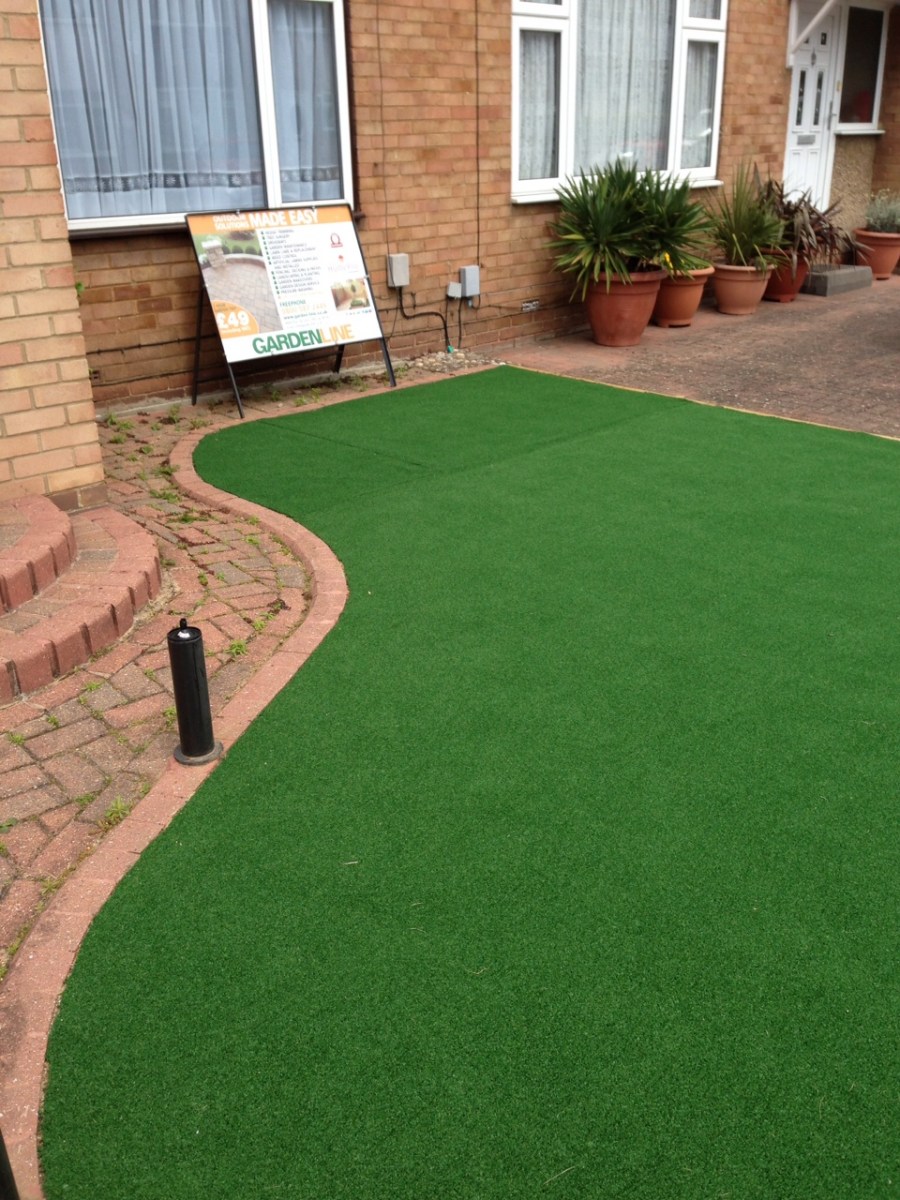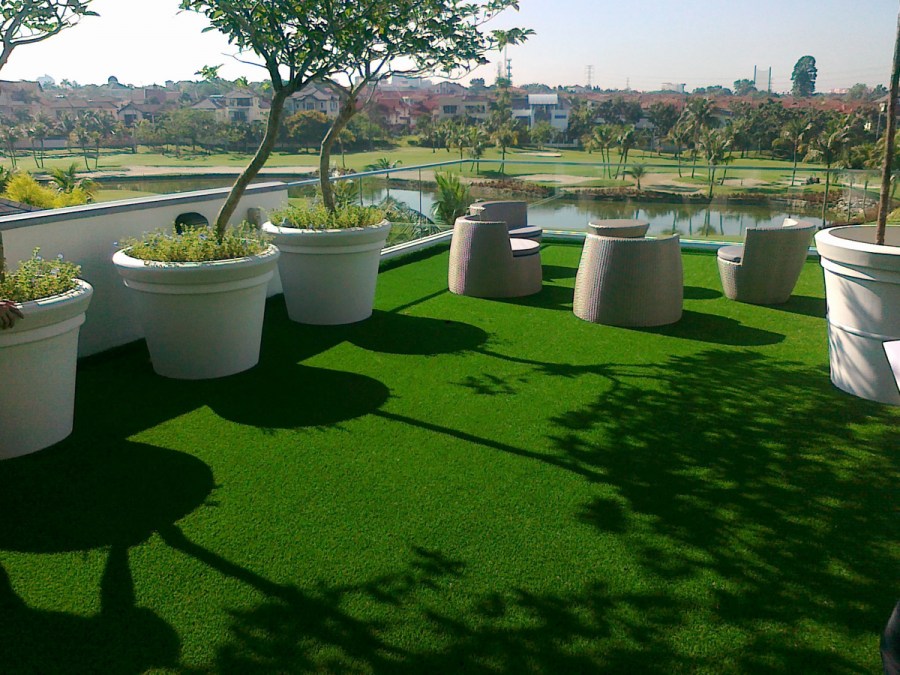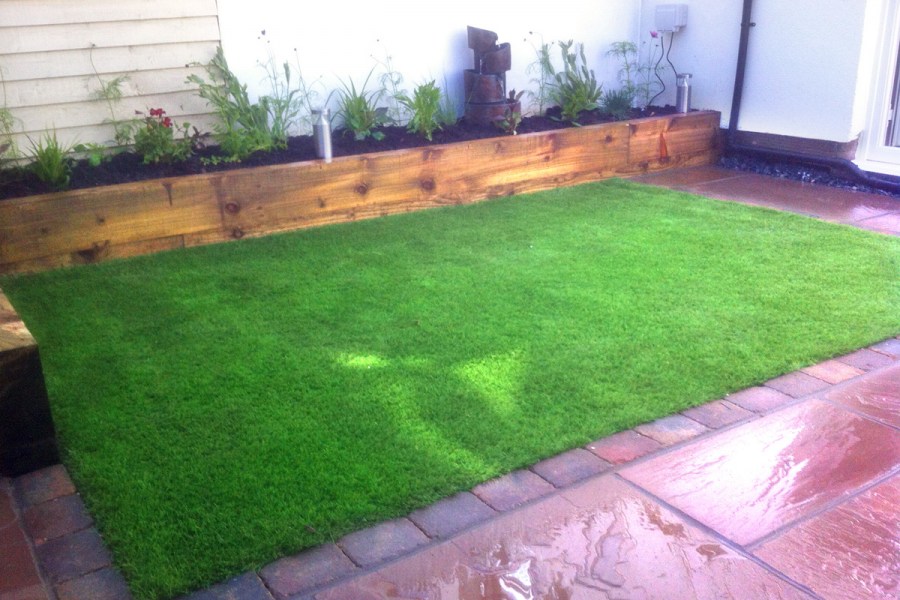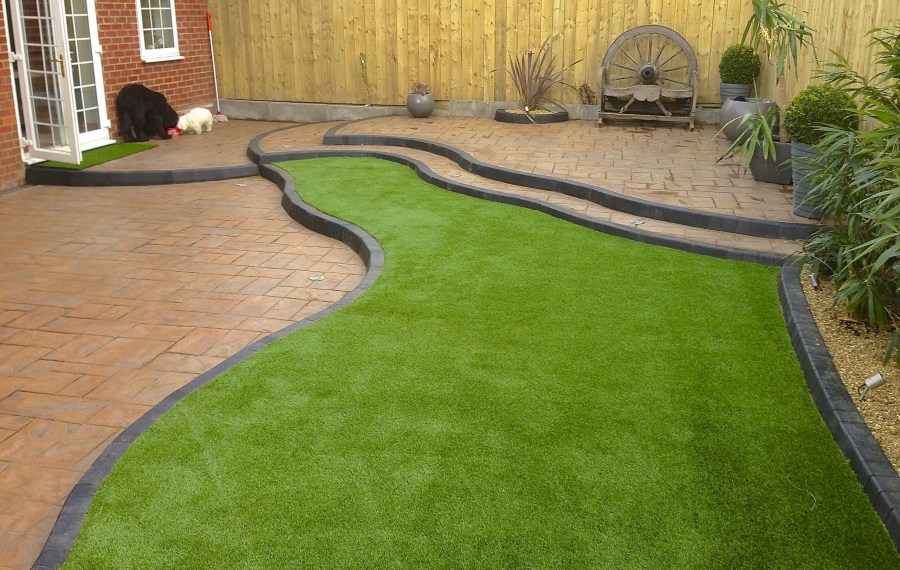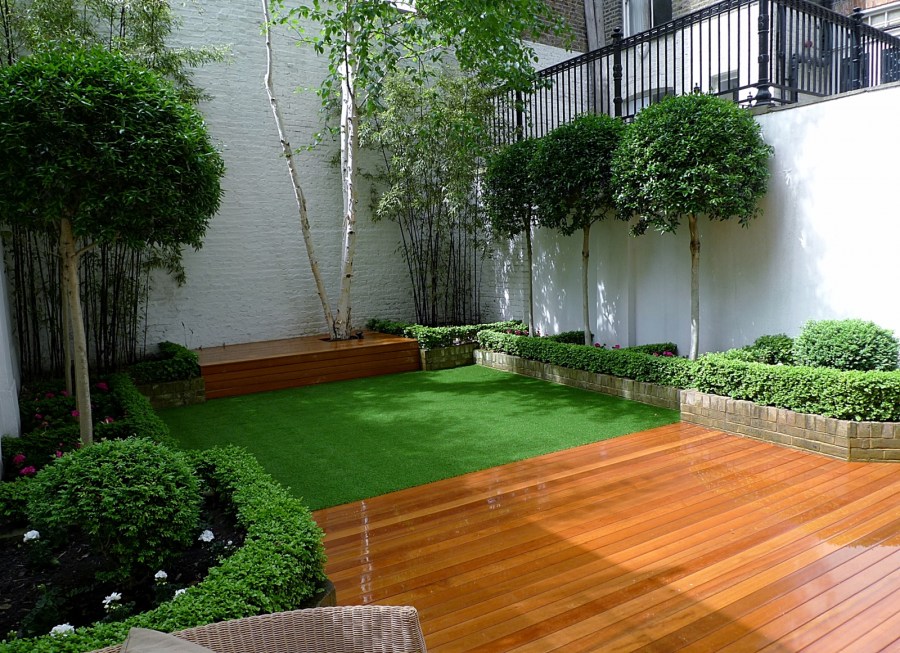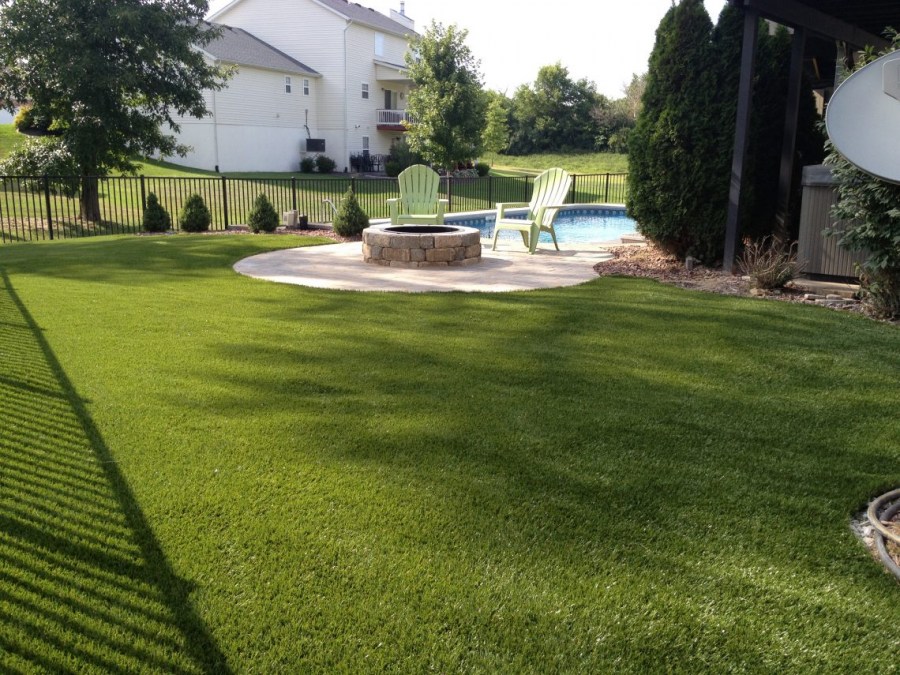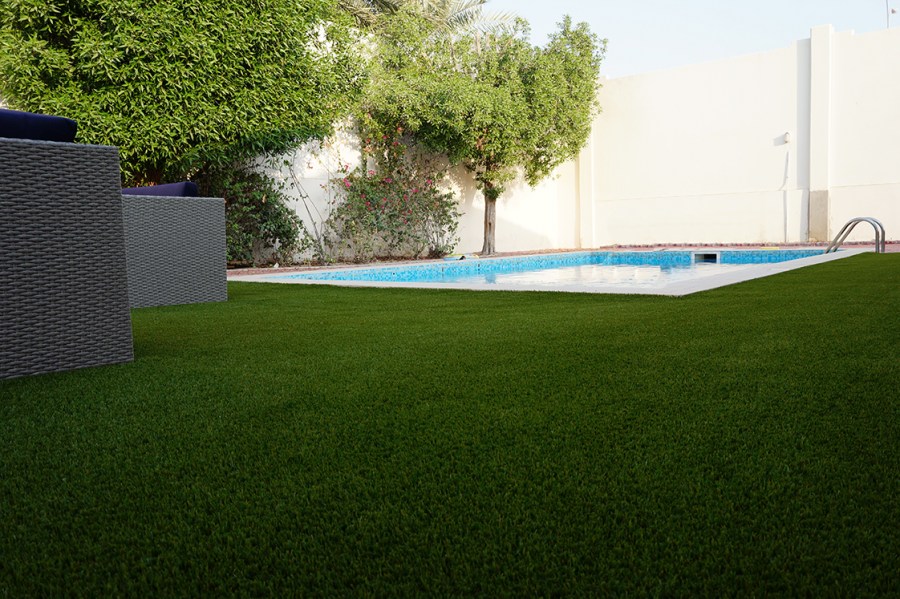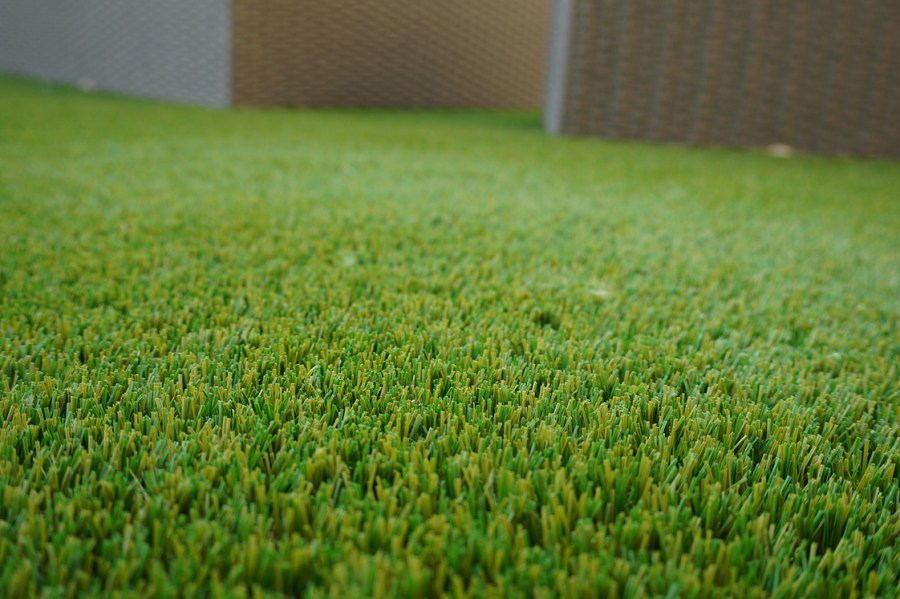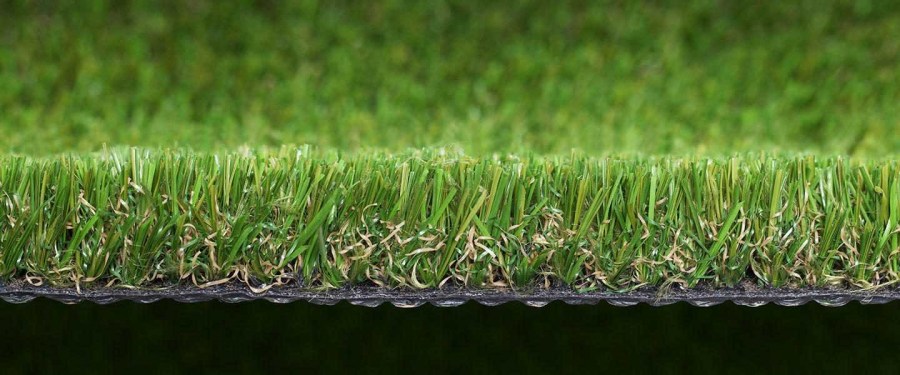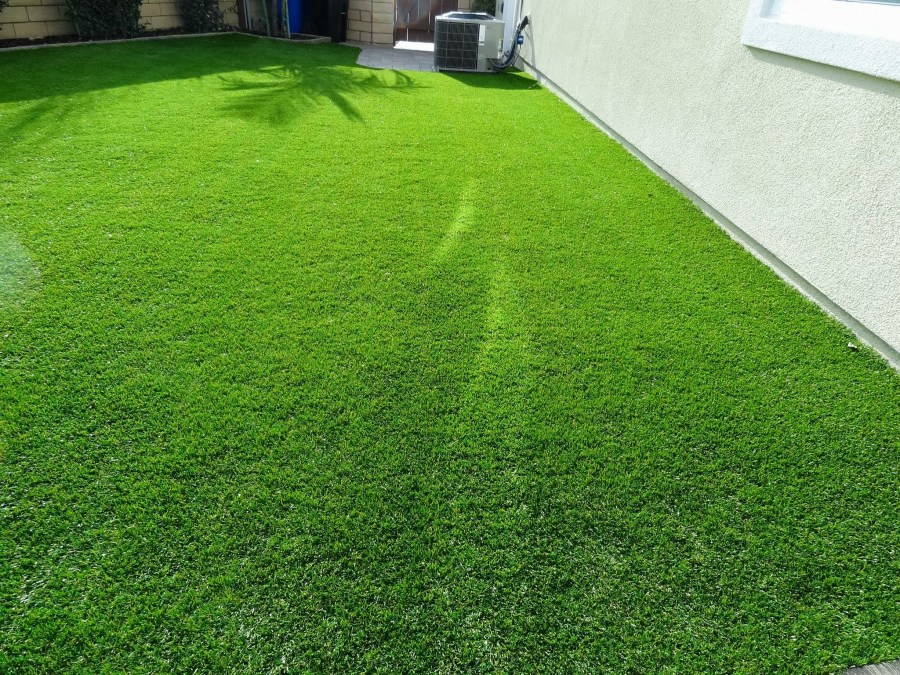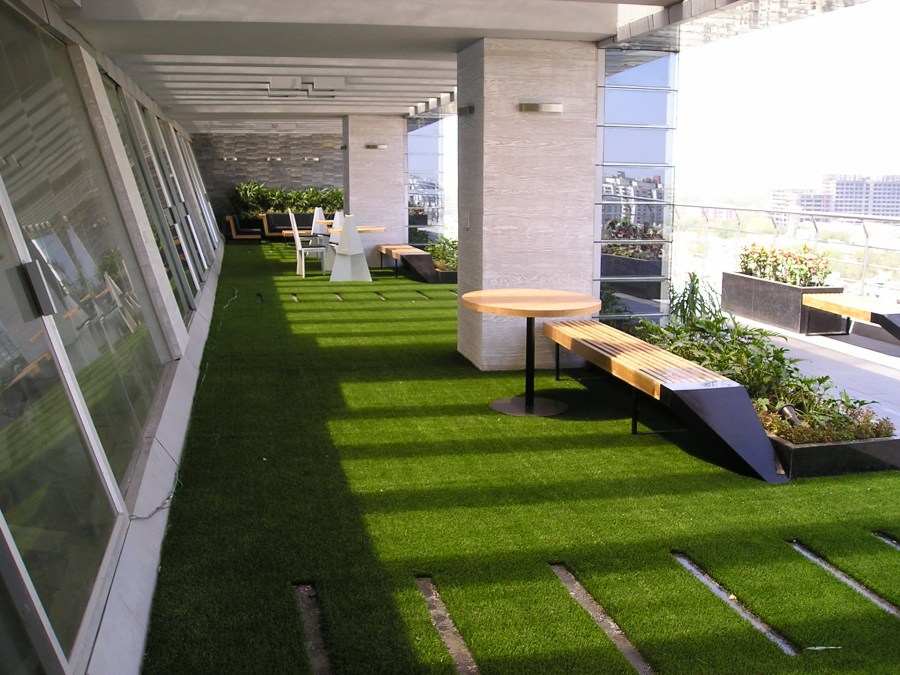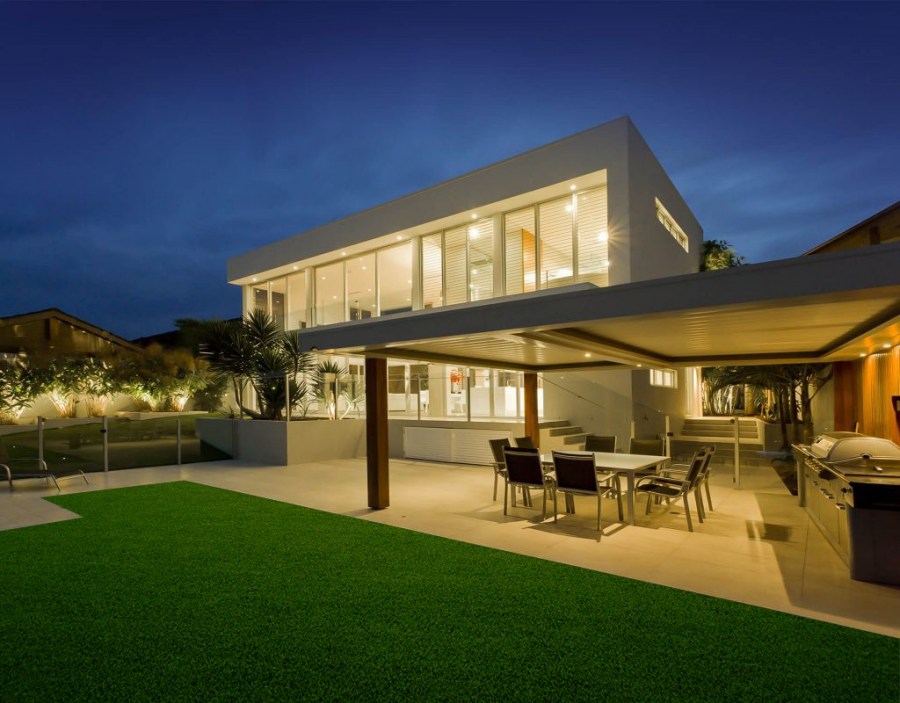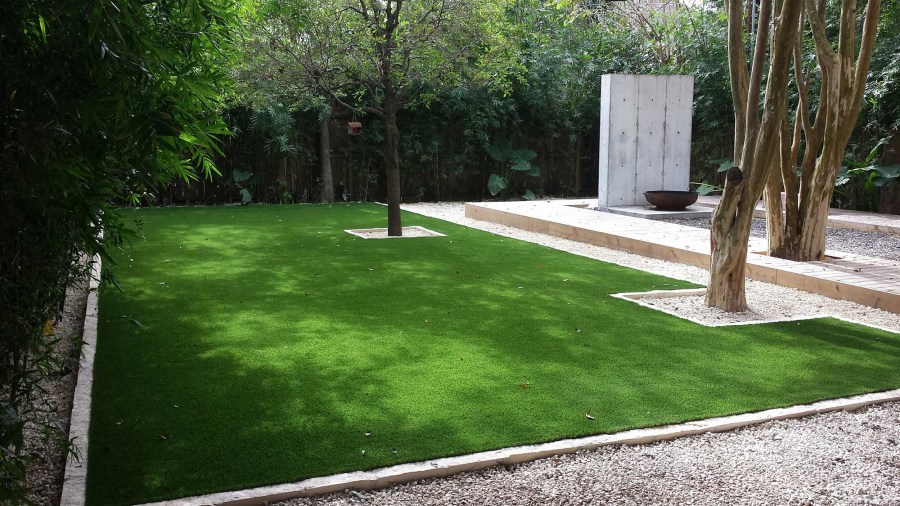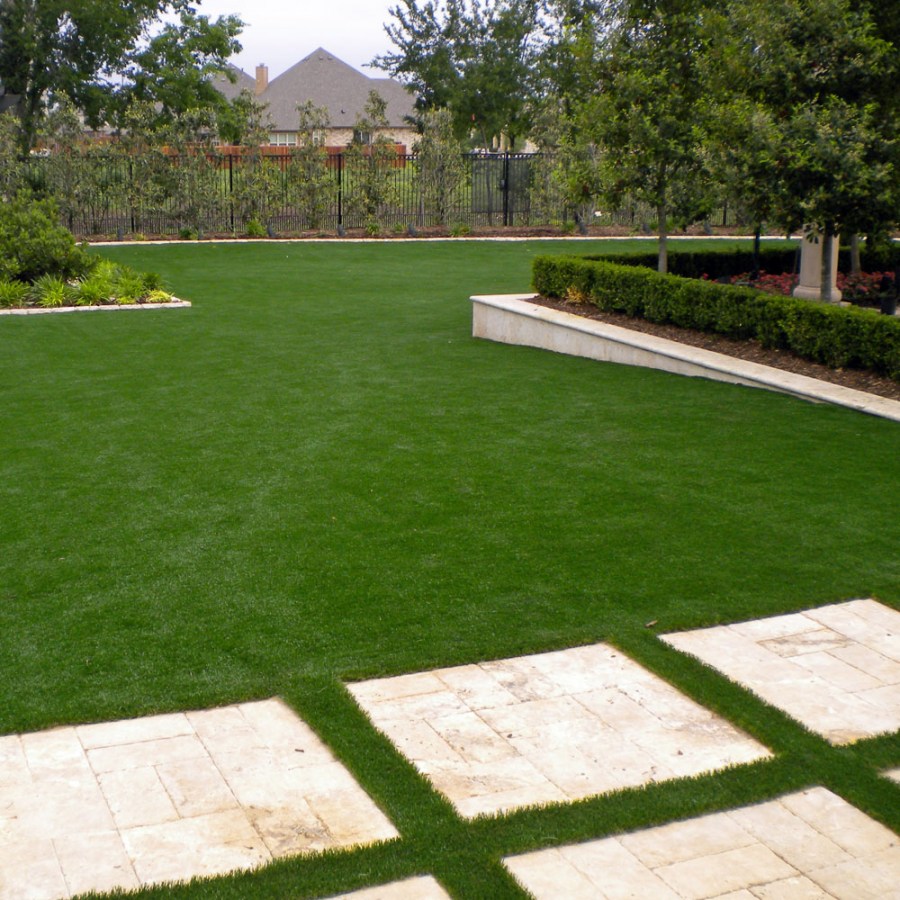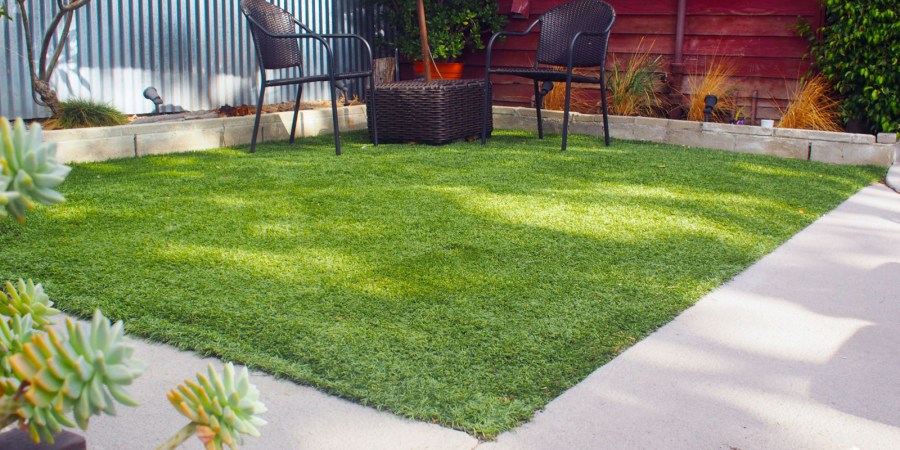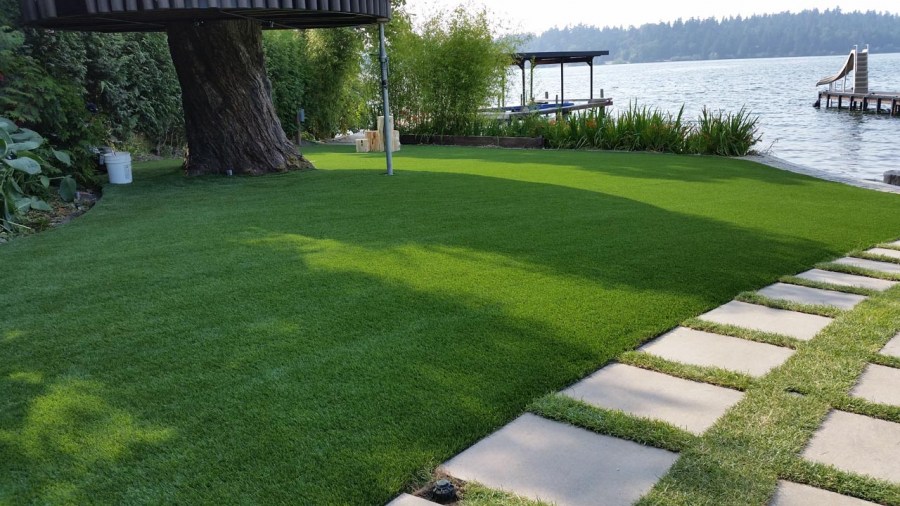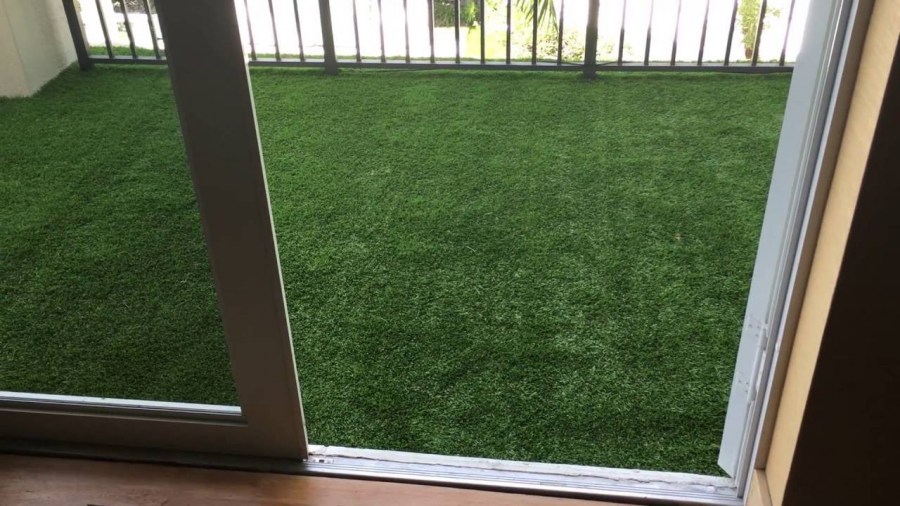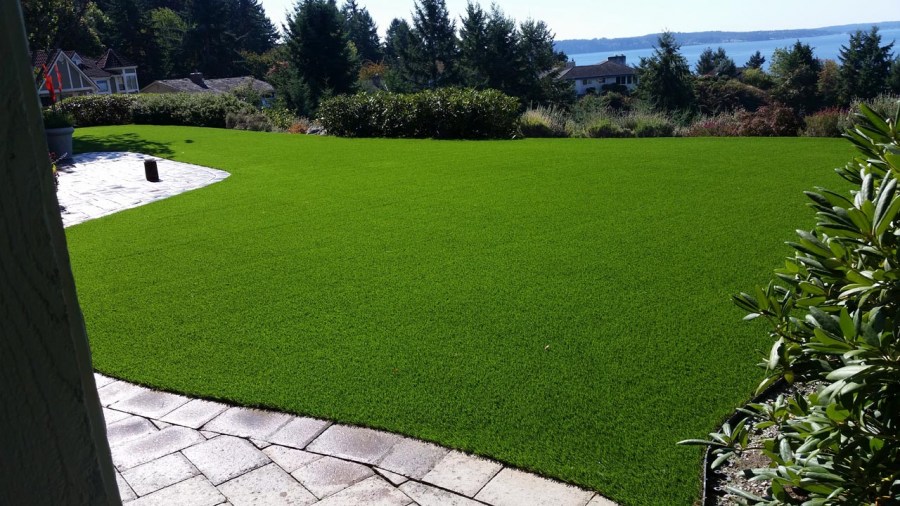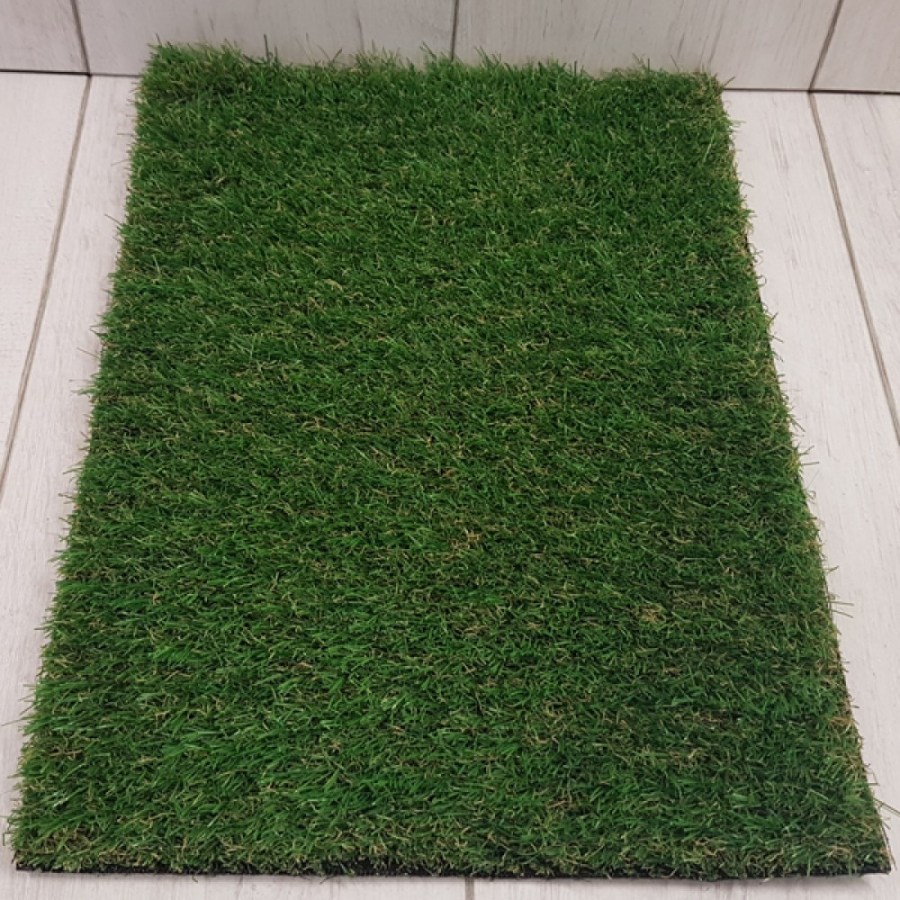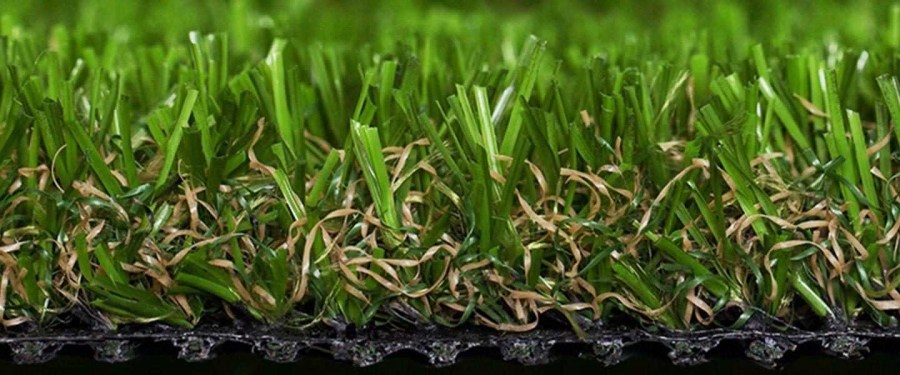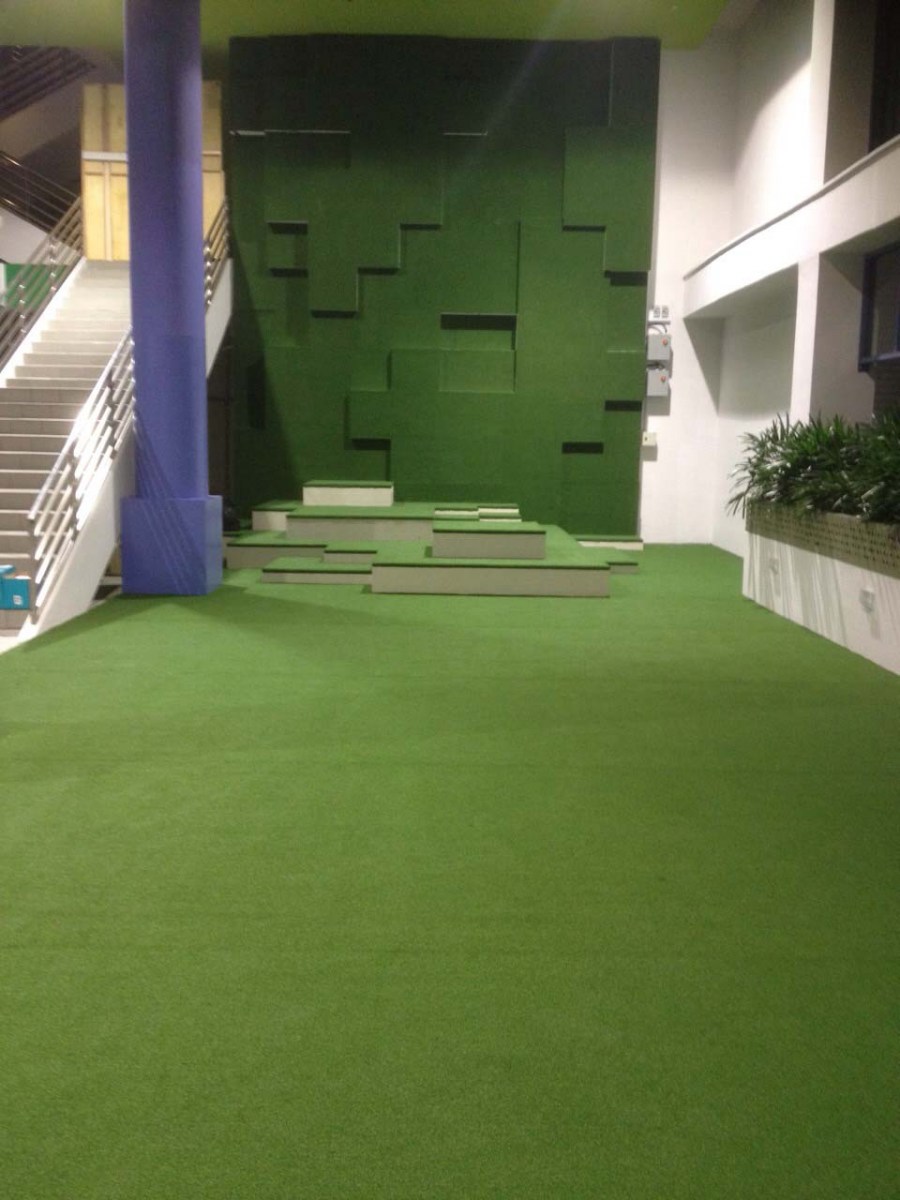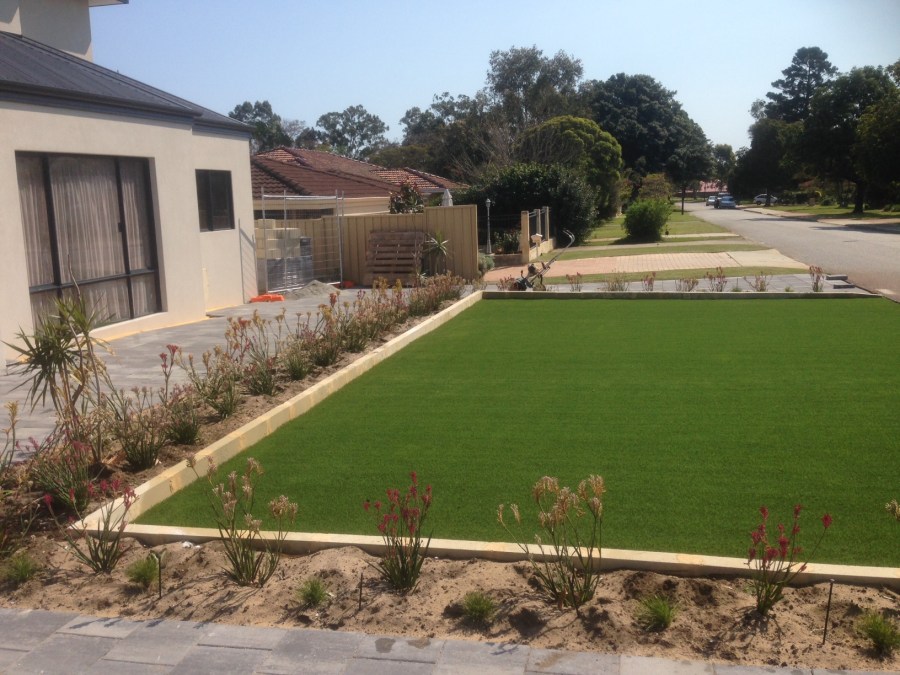Artificial grass - the main types and advantages of use in landscape design (70 photos)
Initially, artificial grass was created as a coating for various sports fields. For example, for a football field. Its creation made it possible to line “grass” on covered areas and to operate it longer. After all, she does not need recovery time after use, and also does not need to cut, trim, etc. As you can see in the photo of artificial turf, it looks like a carpet.
Due to the saving of time and money that were previously spent on the maintenance of beautiful and neat grass, designers began to use synthetic lawn in their projects, which led to its popularization. The coating began to be used to simulate lawns, for playgrounds, in school stadiums, in animal pens, etc.
A coating is made of plastic, which perfectly tolerates temperature changes, exposure to sunlight, rain, snow and many other troubles. At each company that produces the coating, the grass creates its own unique pattern and texture.
Types of Synthetic Lawn
When choosing a coating, you need to decide what purpose you need it for. There are three types in total.
Not filling - the closest to the natural look of grass. If you do not specifically look for a trick, then it can well be mistaken for a real lawn. It is used as a decorative element and is not suitable for active sports.
To create a natural effect, the fibers have a very thin and delicate structure. And with active use, they crumple and deform.
Semi-filled - has a shock-absorbing effect and well protects against injuries. It is used to cover children's play areas. The sections between the fibers are filled with a special filler that keeps the pile in the correct position and allows you to actively use the canvas.
Backfill - has a hard pile, which is due to the use of polypropylene for manufacturing. It is used for sports grounds. The filler between the fibers contains rubberized elements. They are responsible for reducing friction and help avoid injuries.
The benefits of artificial grass
Initially, artificial turf was developed for sports purposes. And thanks to this, it combines practicality, durability and comfort. She is not afraid of rain, snow, hail, dirt or slush. Lawn coverings are often used in school stadiums, summer cottages or on playgrounds.
It has no restrictions on the duration of operation per day. Natural lawn is not recommended to be actively used for more than 80-90 minutes per day. The rest of the time is needed to restore it. Synthetic coating wins in this regard. It is always available. Whether it is morning, day, evening or night. And also you can borrow as much as you want.
The synthetic coating is weather independent. Natural grass from the rain gets wet, forms dirt and the impression of its operation during this period is unpleasant. And also it is prone to disease, decomposition and fades in the cold months, requires constant care, whether it is watering or weeding. If you do not want to spend time and energy on complex grass care, then laying an artificial lawn is the best solution.
Due to its special structure, synthetic grass creates a soft gasket between hard ground and humans. Protects from severe injuries and bruises, reduces the load on the knee joint.
Containing such coverage is financially more profitable. It does not require weeding, fertilizers, constant updating, haircuts.And also for him it does not matter on what land is located. He will delight you with a beautiful appearance even on absolutely lifeless land or sand.
Durability is also an undeniable advantage. Such a coating does not wear off, does not change shape, retains color. Duration of service starts from 15 years.
You can select and order an artificial turf in Leroy Merlin.
Stacking
Laying an artificial lawn for a summer residence with your own hands is simple. There are no requirements for the base on which the canvas will spread. It can be sand, earth or concrete. To increase the service life, an additional springy layer is placed under the grass. Thickness from 2-3 centimeters.
How to lay artificial turf? There are a few simple steps.
Creating a flat plane under the lawn. The canvas is laid only on a flat platform, which is freed from various debris and mounds.
If you live in an area with long rainy seasons. Then, when designing a site, make an area with an arrangement of grass under a slight slope. This will protect the area from stagnant water and the coating will dry out faster.
Surface seal. A level surface is important to tamp. This is necessary if the grass is placed on sand or soil.
If the synthetic grass is not laid on asphalt or concrete, it is necessary to create trenches for drainage of the soil. This will help protect the surface under the coating from decomposition.
We put a sealant on a tamped pad. Then you can start laying the grass. The roll rolls straight. Each next roll needs to be slightly superimposed on the previous one.
To create the most accurate seam, it is necessary to cut off the overlaps with a knife. To give the territory a more finished look, you can install borders along the perimeter of the lawn.
Joints should be glued immediately after installation. Due to weather and temperature changes, non-glued joints can slightly change their position, which will lead to more inaccurate and noticeable seams.
Before gluing, go around the perimeter of the lawn, check the condition of the coating. It should not have bumps, hollows, bumps or swellings. To create a secure fit, strong adhesive and tape with double-sided adhesive are used. The tape is placed under the plane of the lawn and lubricated with glue on top.
Lawn care
Before you worry about buying a lawn, you need to learn about the rules of care and maintenance. They are quite simple and do not require additional financial investments. But following these guidelines will significantly increase the life of your artificial turf.
Basic principles of lawn care:
- the grass needs to be washed and cleaned, in case of severe contaminants a detergent can be used
- if you actively use the coating for no more than three hours a day, sand or soil should be renewed once every six months;
- for more frequent use, sand or earth should be added every two or three months.
Photo of artificial turf
Artificial grass: 70 photos of the main types of modern coating
Join the discussion:
